As a business owner, you know your business wouldn’t be where it is today without your employees.
And it also won’t be able to grow without them.
So naturally, you want to take care of your employees by fulfilling your obligations towards them.
One of these obligations is deducting salary tax from their wages to help them meet their tax liabilities in manageable increments throughout the year and avoid financial strain at tax time.
For your business, navigating salary tax means budgeting, maintaining healthy cash flow, and avoiding penalties—three pillars that keep your business thriving.
How can you not just manage but master Australian salary tax for the good of your business?
This guide will explain your payroll responsibilities as an employer, plus give you some helpful salary tax management tips.
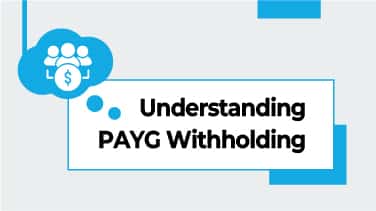
Understanding PAYG Withholding
Australian salary tax, commonly referred to as Pay As You Go (PAYG) withholding, is a system where you deduct tax from your employees’ salaries and wages before paying them and submit it to the Australian Taxation Office (ATO) on their behalf.
This part of the payroll process helps your employees meet their income tax liabilities gradually throughout the year.
Non-compliance with PAYG withholding obligations can lead to significant penalties from the ATO, including fines and charges on any unpaid amounts.
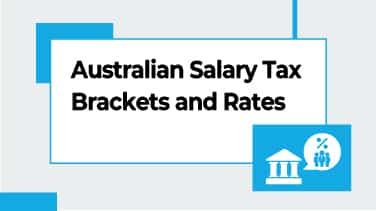
Australian Salary Tax Brackets and Rates
Here are the 2023-24 Australian residents tax brackets and rates.
| Taxable Income Brackets | Tax Withheld Rates |
|---|---|
| $0 – $18,200 | $0 |
| $18,201 – $45,000 | 19c for each $1 over $18,200 |
| $45,001 – $120,000 | $5,092 plus 32.5c for each $1 over $45,000 |
| $120,001 – $180,000 | $29,467 plus 37c for each $1 over $120,000 |
| $180,001 and over | $51,667 plus 45c for each $1 over $180,000 |
It’s important to note that these rates do not include the Medicare levy of 2%.
Step-by-Step Calculation Example
Let’s say you have an employee earning $85,000 annually.
The 2023-24 tax rate for income between $45,001 and $120,000 is $5,092 plus 32.5c for each $1 over $45,000.
Here’s how you would calculate the PAYG withholding.
- Tax on first $45,000: $5,092
- Each $1 over $45,000: $85,000 – $45,000 = $40,000
- Tax on remaining $40,000: 0.325 x $40,000 = $13,000
- Total annual PAYG withholding: $5,092 + $13,000 = $18,092
- Monthly PAYG withholding: $18,092 ÷ 12 = $1507.67
For assistance with tax withheld calculations, you can use this ATO calculator.
Medicare Levy and Your Small Business
The Medicare Levy is an additional tax that helps fund Australia’s public health system, Medicare.
The standard Medicare Levy rate is 2% of an individual’s taxable income.
For example, if an employee’s taxable income is $85,000, you would multiply that by 0.02 to get a Medicare Levy amount of $1,700.
This amount is then included in the PAYG withholding calculations and submitted to the ATO along with the income tax withheld.
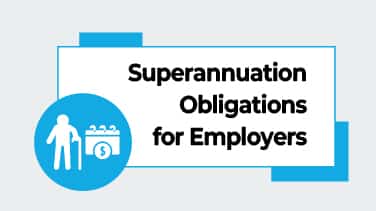
Superannuation Obligations for Employers
In addition to salary tax and the Medicare Levy, you also have obligations regarding superannuation for your employees.
The current superannuation guarantee rate is 11% of an employee’s ordinary time earnings. This rate will rise to 11.5% on July 1, 2024.
You can offer employees a choice of super funds. If an employee doesn’t choose a fund, you must contribute to a default fund that offers a MySuper product.
When selecting a super fund, consider factors like performance, fees, insurance options, and customer service.
Superannuation contributions must be made at least quarterly, according to this schedule:
- 1 July – 30 September (due by 28 October)
- 1 October – 31 December (due by 28 January)
- 1 January – 31 March (due by 28 April)
- 1 April – 30 June (due by 28 July)
If you fail to meet the superannuation obligations, you’ll have to pay the Superannuation Guarantee Charge (SGC), which includes the unpaid super amounts, interest on those amounts, and an administrative fee.
To avoid these penalties, keep accurate records and make timely superannuation payments.
Staying informed about changes in superannuation laws and rates is also essential for maintaining compliance.
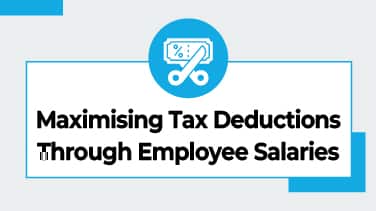
Maximising Tax Deductions Through Employee Salaries
So far, we’ve seen what you, as an employer, are required to pay regarding Australian salary tax and superannuation contributions.
Do these obligations offer any benefits to your business?
When you pay salaries and wages to your employees, these costs can be deducted from your business’s gross income, lowering your overall taxable income and reducing the tax your business owes each year.
Lessening your tax burden frees up resources you can reinvest into your business to enhance growth, improve services, or expand your team.
There are several ways you can maximise tax deductions through employee salaries.
- Salary packaging: Employees agree to receive part of their pre-tax salary in the form of benefits such as cars, computers, or additional superannuation contributions. This can reduce the employee’s taxable income and your PAYG withholding obligation.
- Fringe benefits: Private health insurance, company cars, and educational assistance fringe benefits can be taxed at a lower rate than cash salary or have certain tax exemptions.
- Employee bonuses and incentives: When properly structured, these can be deductible for your business when paid and only taxable to the employee when received.
- Work-related expenses: If you reimburse employees for certain work-related expenses, these reimbursements can be tax-deductible.
- Training and development expenses: Training and professional development that enhances an employee’s skills can be fully deductible for your business.
- Additional superannuation contributions: While superannuation contributions are capped at a certain limit before extra taxes apply, making contributions up to this limit is tax-deductible for your business.
It’s a good idea to consult an experienced accountant to optimise tax deductions like these.
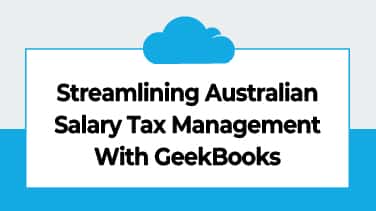
Streamlining Australian Salary Tax Management With GeekBooks
Managing salary taxes can be a complex and time-consuming task on top of all your other business responsibilities.
Outsourcing your payroll responsibilities to GeekBooks can significantly streamline this process.
We’ll provide expert handling of your PAYG withholding and superannuation contributions in compliance with all ATO regulations.
You can say goodbye to payroll errors and the looming threat of ATO penalties!
With our professional team managing your payroll, you can focus more on growing your business and less on administrative tasks.
Contact GeekBooks today to take the first step towards stress-free payroll management.
Complete our online booking form or call 02 9158 3591.


